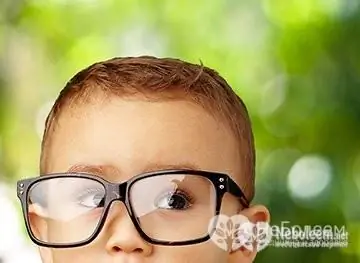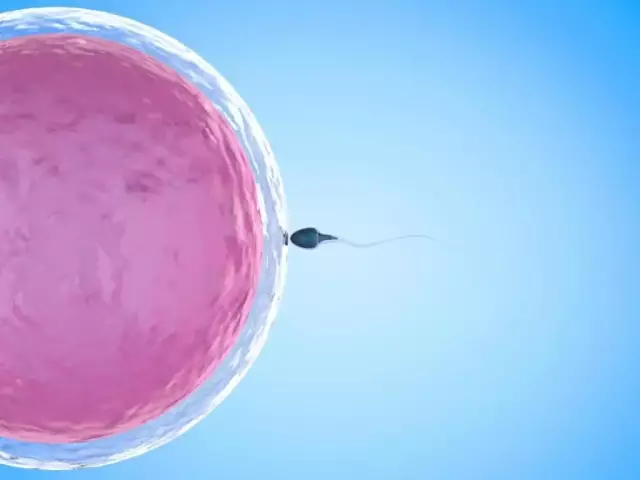- Author Rachel Wainwright [email protected].
- Public 2023-12-15 07:39.
- Last modified 2025-11-02 20:14.
Vision in children

Vision in children is the most important function that provides visual information about the world around us, which is under tremendous stress. Moreover, the visual apparatus, especially at an early age, is rather fragile. There are many external factors that can impair its performance.
Features of vision in children
When a child is born, his visual system is not yet fully formed. The peculiarities of vision in children are such that the baby is still only able to recognize light, that is, to distinguish day from night. The imperfection of the optic nerves and muscles that move the eyeball does not allow it to distinguish objects more clearly, squint is also normal at this age.
It is also impossible not to say about the features of the blinking reflex of the newborn. No intense movements close to the eyes will make the baby blink, then, as it will easily happen, thanks to the inclusion of the light.
During the first year of life, along with the growth and development of the cerebral cortex, the visual center also improves. The work of the eyes is synchronized, an idea of the surrounding world and the so-called library of images are formed.
If at this age the vision is impaired and not corrected, then the general further development of the baby cannot be called full. Permanent inadequacy of the visual picture, to one degree or another, entails an intellectual lag. Regular examination by a pediatric ophthalmologist and timely correction of vision in children will help avoid such negative consequences.
From one to two years of age, vision in children plays an important role in the formation of the speech apparatus, since it is the repetition of the articulation of adults that helps the child learn to speak. At this age, watching television puts too much strain on the muscles of the eyes.
By the age of three, the child is already able to tell what exactly he sees. In senior preschool and primary school age, it is extremely important to dose visual loads and provide the child's eyes with regular rest: for every half hour of classes, at least 15 minutes of break. The same principle applies to television entertainment. Among other things, the distance from the child's eyes to the TV screen should not be less than 2-3 m.
Small-screen electronic games overload the eyesight in children of this age group. Even after 30 minutes, muscle spasm, eye redness, discomfort and watery eyes may develop. Sometimes there is a decrease in visual acuity in children, in particular with the visual perception of distant objects. A persistent spasm can lead to permanent visual impairment - hyperopia or myopia. To reduce the likelihood of visual impairment in children, prevention should be started as early as possible.
Vision standards in children of different ages
You can check the norm of vision in a 6-month-old child using this test: a red ball with a diameter of 4 cm is hung on a string and swayed. Then a child is brought to him in his arms and they are watching when he will react with his eyes to what is happening. When the kid noticed the ball from a distance of 1 m, then his visual acuity is 0.03; if with 3 m, then 0.11, and with 5 m, then 0.18. In this case, the norm is the range from 0.1 to 0.3.
For a one-year-old baby, such a test is carried out with a ball with a diameter of 0.7 cm. A distance of 1 m corresponds to a sharpness of 0.2; 3 m - 0.6; 5 m - 1.0 at a rate of 0.6-0.9.

It becomes possible to check children's eyesight with a special test at about the age of three. Before that, it is enough to closely monitor the development of the child, his reactions to certain objects, images, etc. At three years old, the baby is offered Orlova's table - 10 rows of silhouette pictures, located at a distance of 5 m from the eyes. The child must first name the picture in the top row; so they gradually move to the lower row.
All correctly named pictures in one row or another determine visual acuity. Her norms:
- At 3 years old - 0.6-0.9;
- At 4 years old - 0.7-1.0;
- At 5 years old - 0.8-1.0;
- At 6 years old - 0.9-1.0.
Thus, visual acuity increases from birth to school age, and by the age of 7-8, it meets the standards of an adult.
Regular visits to a pediatric ophthalmologist will help to identify and correct visual impairments in children in a timely manner.
Found a mistake in the text? Select it and press Ctrl + Enter.






